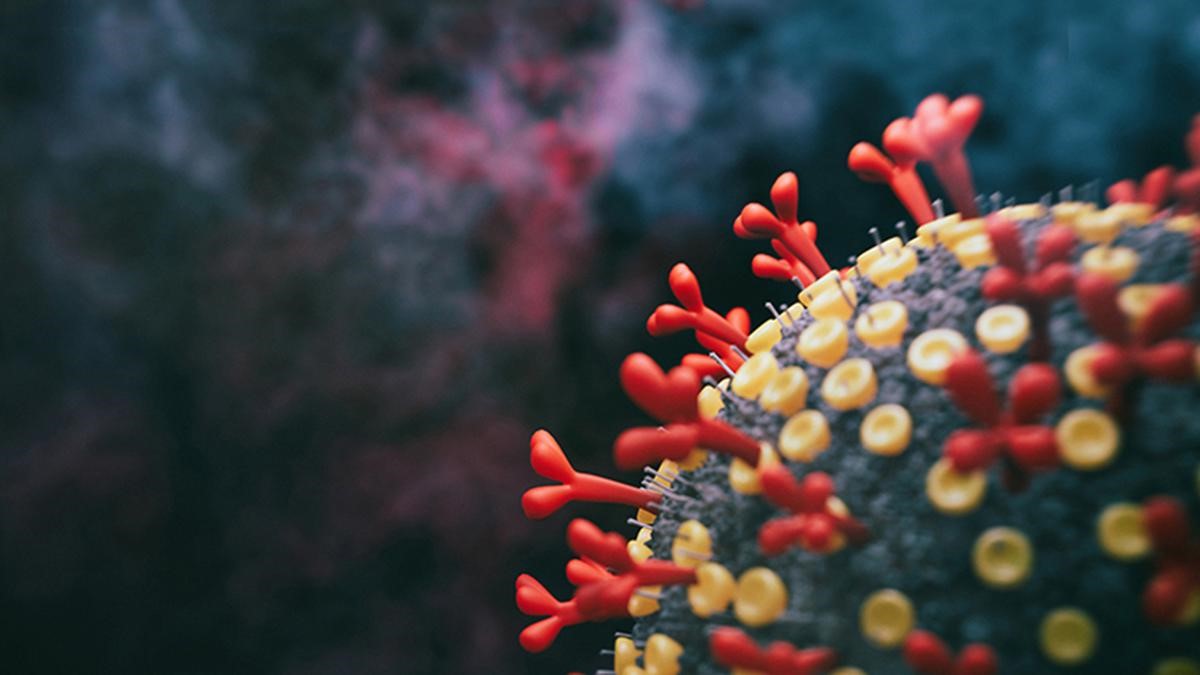Description

Source: Hindu
Disclaimer: Copyright infringement not intended.
Context
- The World Health Organization (WHO) has introduced the term "infectious respiratory particles" (IRPs) to describe pathogens that transmit through the air.
- This move aims to address the lack of a common terminology, which was particularly challenging during the COVID-19 pandemic.
- The announcement comes after extensive consultations and reflects shared agreement among public health agencies and experts.
Details
About IRPs
- Infectious respiratory particles (IRPs) encompass particles expelled by infected individuals through breathing, talking, singing, spitting, coughing, or sneezing.
- IRPs exist on a continuous spectrum of sizes, eliminating the need for a dichotomy between aerosols and droplets.
Impact:
- Challenges During the Pandemic: Varying terminologies led to gaps in common understanding and hindered public communication and efforts to curb transmission.
- Streamlined Terminology: IRPs provide a standardized terminology to facilitate communication and response efforts across sectors and disciplines.
Examples of Pathogens Covered:
- Respiratory Infections: Examples include COVID-19, influenza, measles, Middle East Respiratory Syndrome (MERS), Severe Acute Respiratory Syndrome (SARS), and tuberculosis (TB).
Descriptors for Airborne Transmission:
- Through the Air Transmission: Descriptors include airborne transmission or inhalation, and direct deposition.
- General Characterization: The term "through the air" can be used to describe infectious diseases where transmission occurs via airborne particles.

About Pathogens
- Pathogens are microorganisms that cause disease in their host organisms.
- Types: Pathogens can be viruses, bacteria, fungi, parasites, or prions.
- Pathogenicity: Ability of a pathogen to cause disease depends on various factors, including its virulence, infectivity, and host susceptibility.
Types of Pathogens:
Viruses
- Structure: Genetic material (DNA or RNA) enclosed in a protein coat.
- Examples: Influenza virus, HIV, SARS-CoV-2.
- Mode of Transmission: Direct contact, droplets, contaminated surfaces.
Bacteria
- Structure: Single-celled organisms with various shapes (e.g., cocci, bacilli, spirilla).
- Examples: Escherichia coli, Staphylococcus aureus, Mycobacterium tuberculosis.
- Mode of Transmission: Direct contact, contaminated food/water, respiratory droplets.
Fungi
- Structure: Eukaryotic organisms with cell walls made of chitin.
- Examples: Candida albicans, Aspergillus spp., Cryptococcus neoformans.
- Mode of Transmission: Inhalation of spores, direct contact with infected surfaces.
Parasites
- Types: Protozoa (e.g., Plasmodium spp.), helminths (e.g., tapeworms, roundworms), ectoparasites (e.g., lice, ticks).
- Mode of Transmission: Ingestion of contaminated food/water, insect vectors, direct contact.
Prions
- Definition: Abnormal proteins that cause normal proteins in the brain to fold abnormally.
- Examples: Creutzfeldt-Jakob disease (CJD), bovine spongiform encephalopathy (BSE, or "mad cow" disease).
- Mode of Transmission: Ingestion of contaminated meat, genetic predisposition.
Pathogen Lifecycle:
- Transmission: Pathogens spread from one host to another through various mechanisms, including air, water, vectors (e.g., mosquitoes), and direct contact.
- Invasion: Pathogens enter the host's body through portals of entry such as mucous membranes, breaks in the skin, or ingestion.
- Colonization: Pathogens establish themselves within the host, often by adhering to host cells and tissues.
- Multiplication: Pathogens replicate within the host, leading to increased infection and tissue damage.
- Host Response: Host immune system reacts to the presence of pathogens, attempting to eliminate them through immune responses such as inflammation and antibody production.
- Pathogenesis: Pathogens cause damage to host tissues through various mechanisms, leading to the signs and symptoms of disease.
- Resolution or Chronic Infection: Depending on the effectiveness of the host immune response and the virulence of the pathogen, the infection may resolve, become chronic, or lead to the host's death.
Host-Pathogen Interactions:
- Immune Response: Innate Immunity: Non-specific immune responses that provide immediate defense against pathogens.
- Adaptive Immunity: Specific immune responses that develop over time and provide long-term protection against specific pathogens.
- Immunopathogenesis: The immune response to pathogens can sometimes cause collateral damage to host tissues, contributing to disease symptoms.
- Host Factors: Host factors such as age, genetics, and underlying health conditions influence susceptibility to infections and the severity of disease.
Emerging Pathogens:
- Zoonotic Diseases: Diseases that can be transmitted from animals to humans, such as Ebola virus disease and COVID-19.
- Antimicrobial Resistance: The ability of pathogens to resist the effects of antimicrobial drugs, posing a significant threat to public health.
- Pandemics: Global outbreaks of infectious diseases, such as the COVID-19 pandemic, highlight the ongoing threat posed by emerging pathogens.

Impact of Pathogens:
- Health: Pathogens are responsible for a wide range of infectious diseases, from mild illnesses to life-threatening conditions.
- Economic: Infectious diseases impose significant economic burdens through healthcare costs, lost productivity, and impacts on agriculture and livestock.
- Social: Outbreaks of infectious diseases can lead to social disruption, fear, and stigmatization.
- Global Health Security: Pathogens with pandemic potential pose a threat to global health security, requiring coordinated efforts for surveillance, prevention, and control.
Control and Prevention:
- Vaccination: Immunization programs can prevent many infectious diseases by stimulating the immune system to produce protective antibodies.
- Hygiene Practices: Handwashing, sanitation, and food safety measures can reduce the transmission of pathogens.
- Antimicrobial Agents: Antibiotics, antivirals, antifungals, and antiparasitic drugs can treat infections, but misuse can lead to antimicrobial resistance.
- Vector Control: Control of insect vectors can prevent the transmission of vector-borne diseases.
- Surveillance and Response: Early detection, monitoring, and rapid response to outbreaks are crucial for controlling the spread of infectious diseases.
Sources:
Hindu
|
PRACTICE QUESTION
Q. Understanding pathogens and their characteristics is essential to mitigate their impact on public health, agriculture, and society. Comment. (250 Words)
|











